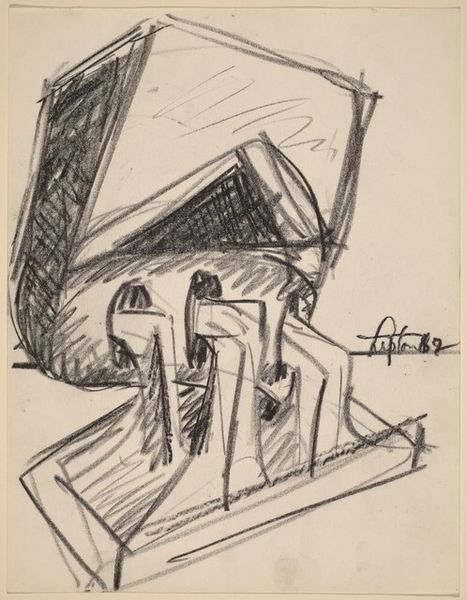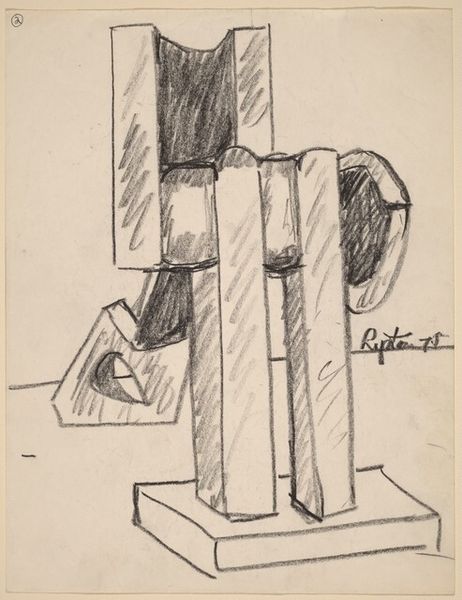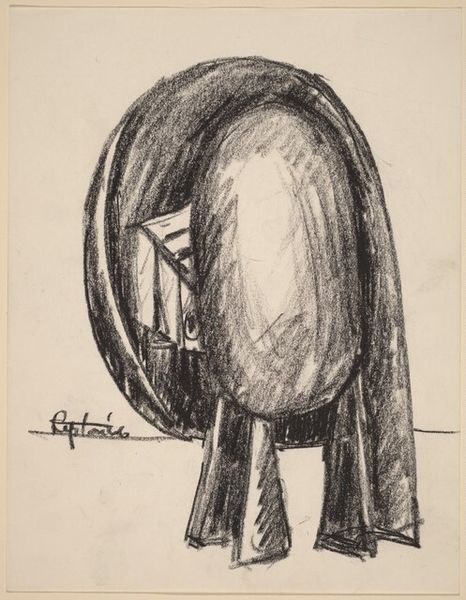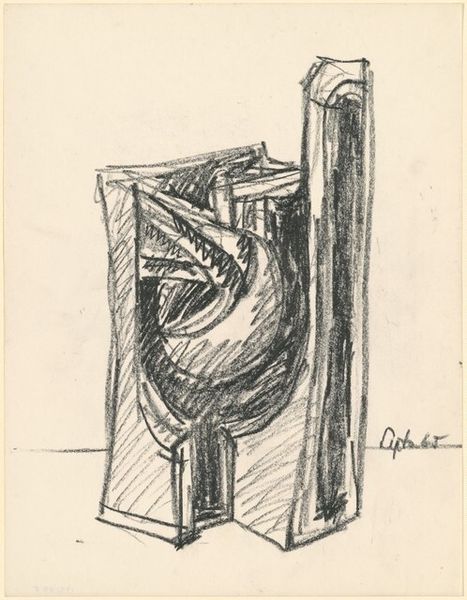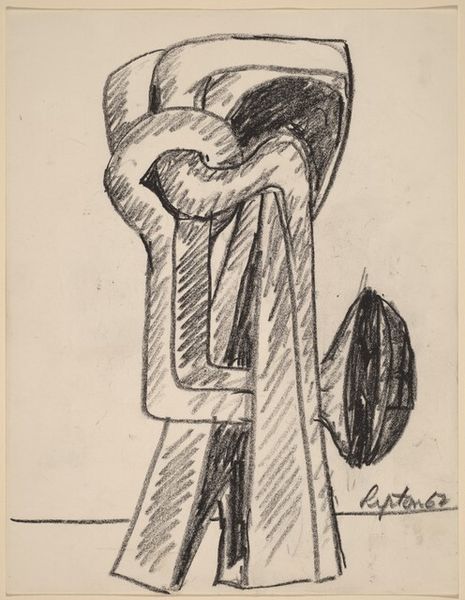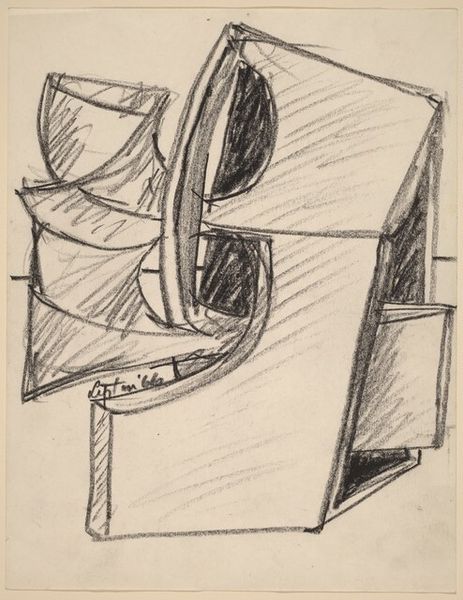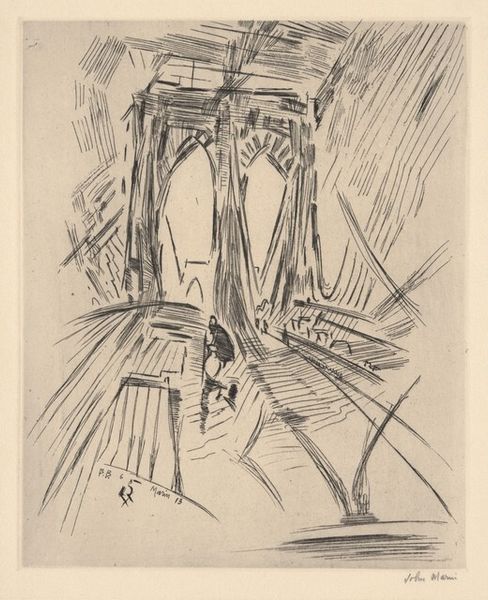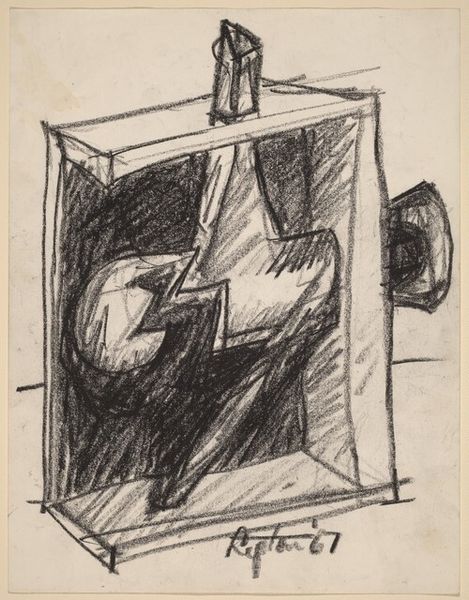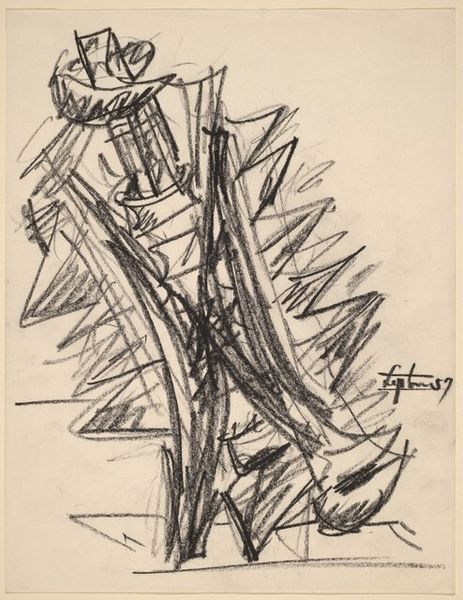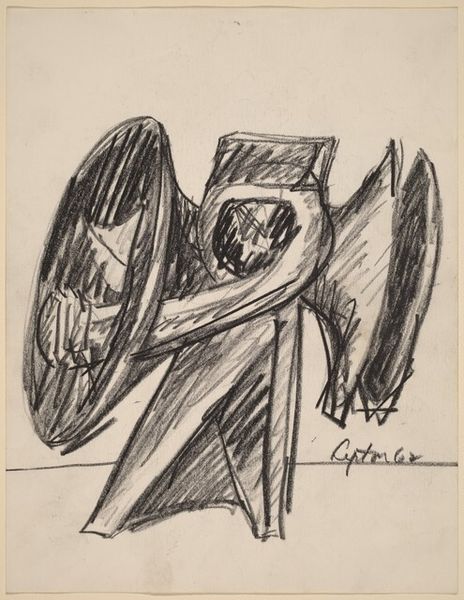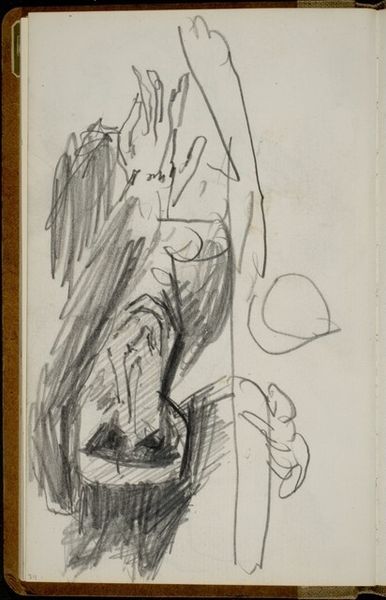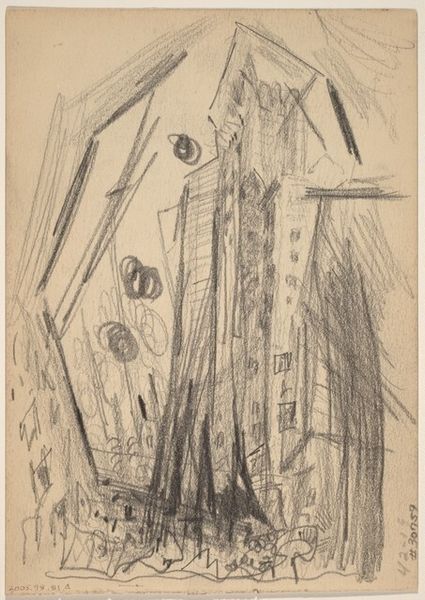
drawing, graphite
#
abstract-expressionism
#
drawing
#
pencil sketch
#
form
#
geometric
#
abstraction
#
graphite
Dimensions: sheet: 27.94 × 21.59 cm (11 × 8 1/2 in.)
Copyright: National Gallery of Art: CC0 1.0
Curator: Let’s turn our attention to a graphite drawing by Seymour Lipton from 1968, a study for his sculpture "Conquistador." What are your initial thoughts? Editor: It strikes me as something monumental yet fragile. The heavy graphite gives it a sense of weight and the angular forms appear architectural, yet the sketch-like quality lends it a fleeting, almost dreamlike air. Curator: The title "Conquistador," combined with the abstract forms, speaks volumes about power and violence. How do you see those themes manifesting in this piece? Editor: I find it very interesting the artist uses simple geometric forms to imply complex meaning. Note the rounded shapes against the sharp angles. Those orbs might be helmet decorations that elevate social status, yet the shadowy forms underneath suggest cloaked figures – something is hidden and distorted beneath outward grandeur. Curator: Right. Abstract Expressionism often wrestled with post-war anxieties and critiques of power structures. Lipton's choice to evoke the Conquistador is fascinating in that context. We must think about not only outward expressions of status but also subjugation, considering its impact, as it has implications for class, race, and cultural identity. Editor: Exactly. These drawings always have such symbolic density. I am reminded of ceremonial architecture or perhaps military fortifications. I see not just brute power but ritualized gestures. Consider, the shading gives volume but also hides as much as it reveals, which may suggest a moral ambiguity inherent to such conquest. Curator: It's interesting how you picked up on the duplicity of this figure through his strategic shading. I can not look at this piece now without that reading informing my viewing. These forms push and pull on each other, which adds a tension that evokes these deeper issues and complexities. Editor: Thank you. As our discussion illuminates, artworks hold much more meaning than what meets the eye. Curator: And by analyzing visual cues alongside sociohistorical contexts, our experience enriches and deepens in unexpected, rewarding ways.
Comments
No comments
Be the first to comment and join the conversation on the ultimate creative platform.
